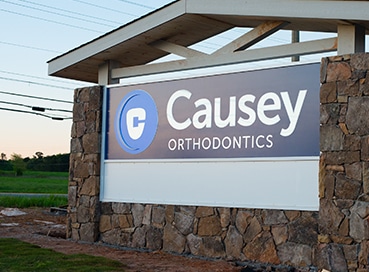The Ultimate Guide To Orthodontics
The Ultimate Guide To Orthodontics
Blog Article
Orthodontics for Beginners
Table of ContentsUnknown Facts About OrthodonticsThe smart Trick of Orthodontics That Nobody is Talking AboutNot known Facts About OrthodonticsThe Best Strategy To Use For Orthodontics7 Easy Facts About Orthodontics DescribedTop Guidelines Of OrthodonticsNot known Incorrect Statements About Orthodontics The Main Principles Of Orthodontics
You might really feel some discomfort for some time when your braces are initially placed on and when they are adjusted. It will certainly take a little time to get used to your dental braces and they can bother your lips and cheeks. If this occurs, an alleviation wax can be applied to your dental braces.It is crucial to clean your dental braces in addition to the front, back and chewing surface areas of the teeth. Your dental expert or orthodontist will provide you tips on just how to brush and on exactly how to floss using floss threaders. After flossing, roll it up in a little ball and placed it in the garbage.
The Best Guide To Orthodontics

Troubles that are not fixed can trigger the treatment to last longer. The conventional steel dental braces, there are tooth-coloured ceramic dental braces that are much less recognizable. Dental braces and elastics can additionally be multicoloured.
Some Known Details About Orthodontics
It overviews the direction of tooth motion and jaw development in someone who is still growing. Orthodontics. There are different kinds of headwear and they may be used throughout any kind of part of the orthodontic treatment. Your orthodontist or dentist will reveal you how to put on the headgear and tell you the length of time to wear it each day
They might require to be put on all the time or part of the time. Tooth removal may be needed if your teeth are crowded or if a tooth is severely out of placement. Jaw surgery (or orthognathic surgical treatment) might be required when there are major differences in the size or setting of the upper and reduced jaws.
The Orthodontics Ideas
An orthodontist is a dental expert trained to identify, stop, and treat teeth and jaw irregularities. Orthodontists function with people of all ages, from kids to grownups.
All orthodontists are dental professionals, but not all dental practitioners are orthodontists. Orthodontic residency programs supply intensive, focused instruction for dental experts. They focus on two areas: Just how to effectively and securely move teeth Just how to correctly lead growth in the teeth, jaw, and faceOnce an orthodontist has finished training, they have the option to come to be board accredited.
Orthodontics - Questions
If you have only minor malocclusion, you may have the ability to use clear braces, called aligners, as opposed to typical dental braces. Some individuals need a headgear to help move teeth into line with pressure from outside the mouth. After braces or aligners, you'll need to use a retainer. A retainer is a personalized tool that maintains your teeth in position.
Not known Details About Orthodontics
They can create additional room in the mouth without having to draw teeth. If you have a severe underbite or overbite, you might need orthognathic surgery (additionally called orthodontic surgical treatment) to lengthen or shorten your jaw.
Throughout your very first orthodontic appointment, you'll likely have: A dental examPhotos taken of your face and smileDental X-raysPanoramic browse around here (360 degree) X-rays of your face and headImpressions to produce mold and mildews of your teethThese examinations will aid your orthodontist know how to wage your treatment. An orthodontist is see this a dental practitioner who's had training to treat your teeth and jaw.
An orthodontist is concentrated on your bite, so something like a damaged tooth would be dealt with by a dental expert. Orthodontists are focused on your bite, or the means your teeth fit together, and the straightness of your teeth.
Not known Incorrect Statements About Orthodontics
A lovely smile can be an excellent possession. It makes you feel confident and helps you form partnerships with your peers. Among the indicators of a lovely smile is a healthy set of teeth and good dental wellness. Most individuals have gapped, misaligned, uneven teeth that can make them incomplete.
Orthodontic therapy is recognized for its capacity to transform smiles, yet its advantages prolong beyond simple visual appeals. Some of these advantages are: One of the significant orthodontic home appliances is that it launches a transformative process beyond tooth placement.
The Greatest Guide To Orthodontics
Precise placement decreases the tendency for teeth to change or regression post-procedure. This placement preservation makes certain that the financial investment in orthodontic treatment returns sustaining advantages for years. Orthodontic treatment has actually evolved significantly, providing a spectrum of treatment methods customized to private requirements and preferences. From standard dental braces to very discreet clear aligners like Invisalign, patients can access diverse alternatives that straighten with their lifestyle and aesthetic choices.
These modifications are essential for maintaining progression and you could look here making certain the treatment remains on track according to the recognized plan. The orthodontist creates an individualized procedure plan based upon the diagnostic records and the person's unique demands and preferences. This strategy details the advised action to address the recognized orthodontic problems and achieve the wanted result.
Report this page